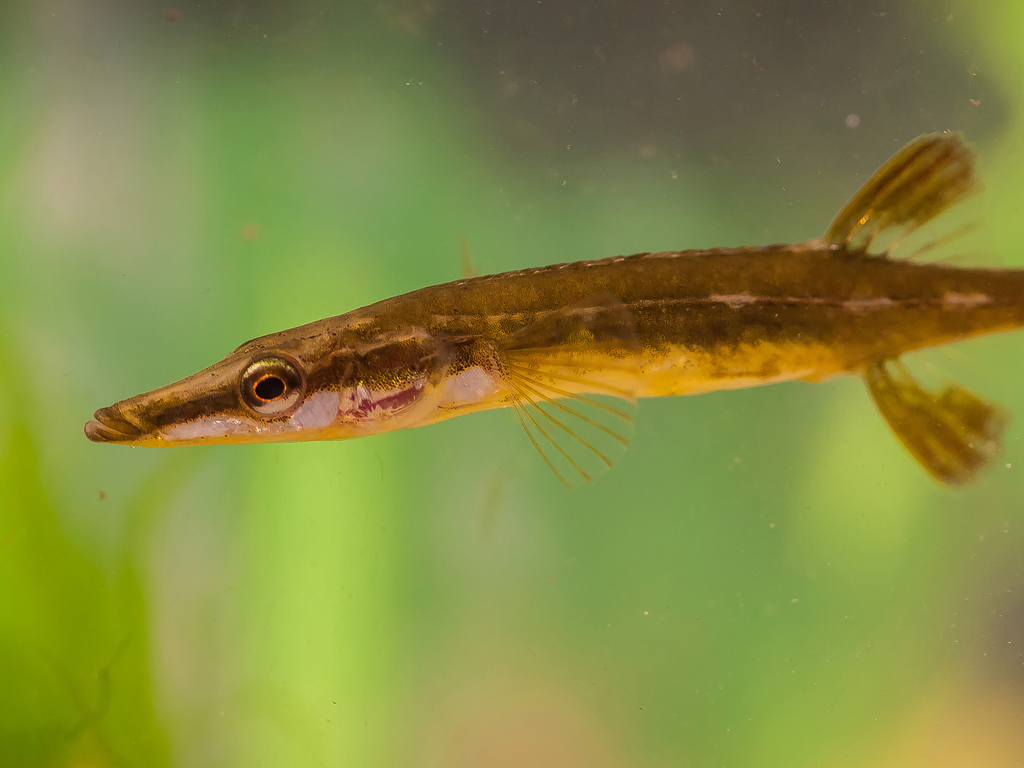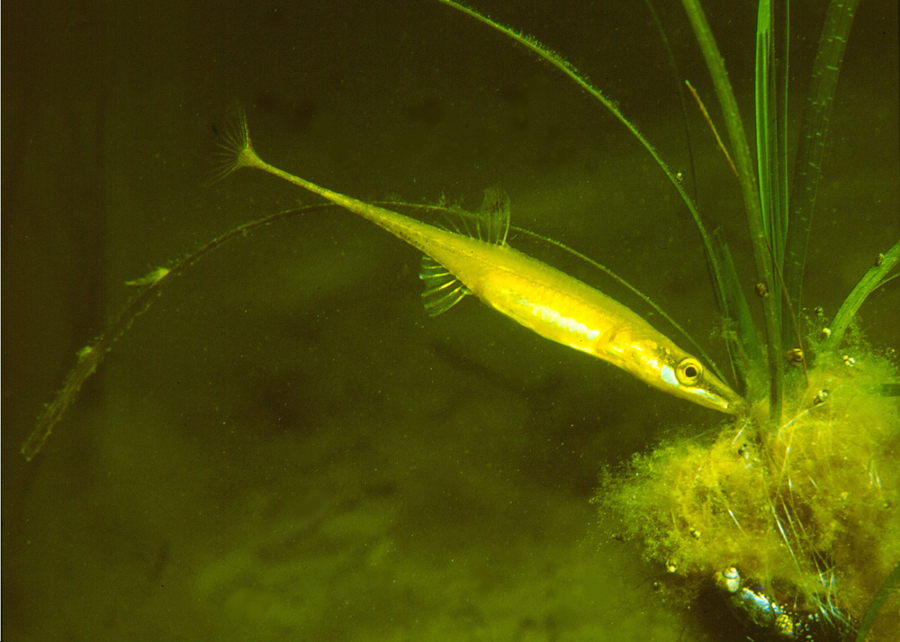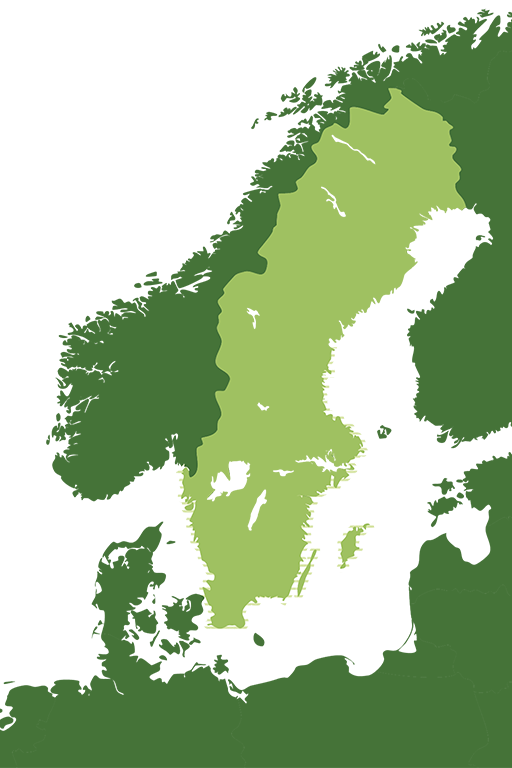Sea Stickleback
Spinachia spinachia

Used to predict the weather
The sea stickleback is a glossy golden-green fish that thrives best in salty waters along the coasts. On its back it has 15 very small spines. There are three species of stickleback in Swedish waters – the three-spined, the nine-spined and the fifteen-spined, also known as the sea stickleback. The sea stickleback differs from the other two, with its very elongated body, and its face that almost resembles that of a pike.
In the past, dried sea sticklebacks were used by fishermen as a way of predicting the weather. The dead fish was hung up in the fishing huts by a thin thread or a strand of hair. The fishermen said they could tell which way the wind was blowing, and how high the humidity would be, by observing how the dried fish spun on the thread. A dried sea stickleback was called a weather fish.

Photo: Michael-Palmgren-Naturum-Öresund
Weaving a nest with kidney secretions
Spring and early summer is the spawning season for the sea stickleback. For this, the male weaves a nest using a sticky secretion that forms in his kidneys. The name of this sticky substance is spiggin, from the Swedish for stickleback – spigg. The male uses the secretion to bind together thread algae and other plant material, forming something resembling a tiny bird’s nest. He attaches the nest to a clump of bladder wrack or other seaweed. Then he shows his nest to interested females. When a female arrives, he also does a little dance to show how good he will be at fanning fresh, oxygen-rich water onto the female’s eggs, if she chooses to lay them in his nest.
The female chooses the male that has the best nest, dances the best, and built the nest in the safest place. She lays her eggs in the nest, and the male fertilises them. The female dies shortly after egg-laying, while the male remains over the summer, guarding the eggs and newly hatched fry. Then he dies too.

Photo: Dieter-Florian-CC-BY-SA
Distribution in Sweden
From the Skagerrak to the Bothnian Sea.
White marking = Distribution

Threat based on the Red List

Trade regulations
CITES: Not listed.